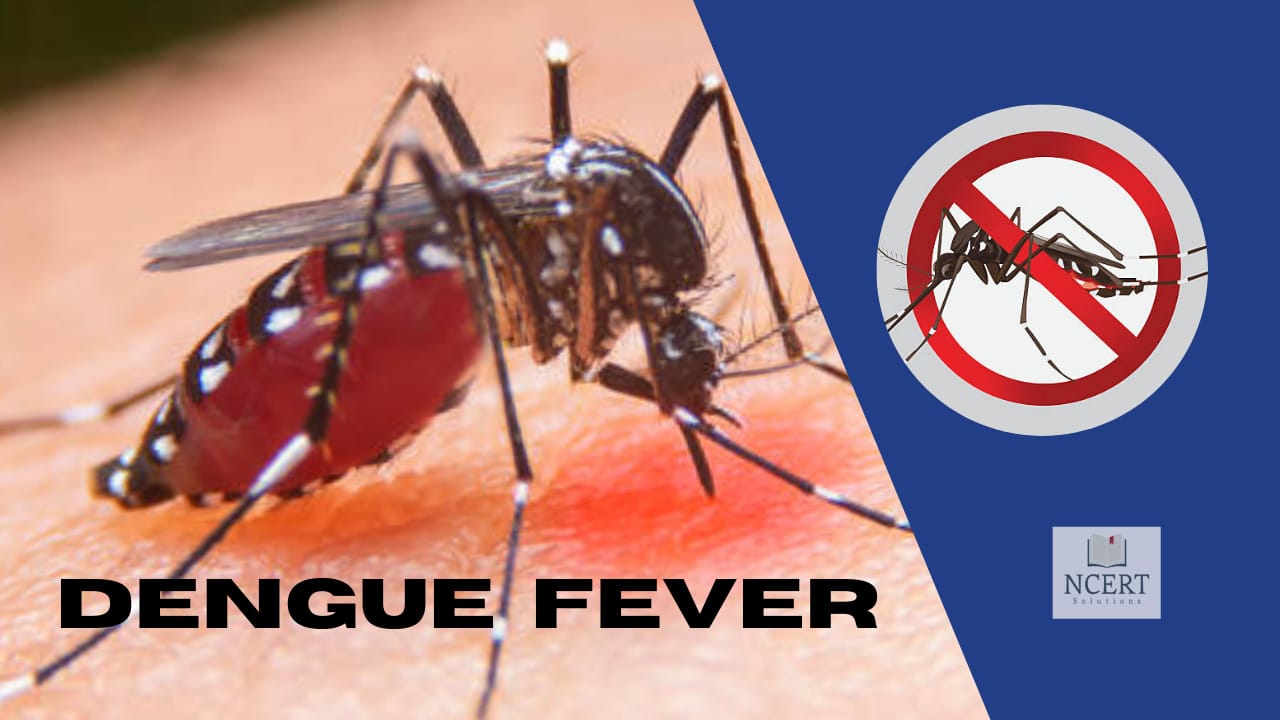Dengue fever is a disease caused by the bite of a mosquito infected with the dengue virus. It is a painful or disabling disease, in which the severity of pain is similar to bone fractures hence this is also known as ‘break-bone fever.
This fever affects approximately 400 million people worldwide each year, and approximately 40% of the world’s population is at risk of infection. Since dengue fever is caused by a virus, it cannot be cured with antibiotics.
This disease becomes very common after the rainy season and is spread through mosquito bites and is highly contagious.
The disease is found in more than 100 countries in Africa, North and South America, the Eastern Mediterranean, Southeast Asia, and the Western Pacific.
North and South America, Southeast Asia, and the Western Pacific are the most severely affected.
It has become a very common disease in India for the last two decades. It can affect anyone, whether it is a small child or an older person, male or female.
Dengue hemorrhagic fever (DHF) is a severe and life-threatening form of dengue fever, which mostly affects children.
Symptoms
The symptoms of dengue fever can be mild in the beginning and hence they are often mistaken for cold or viral symptoms.
The main symptoms of are sudden high fever (can be up to 104 degrees) with at least 2 of these –
- Headache
- pain behind eyes
- nausea and vomiting
- swollen glands
- joint pain or muscle pain
- rashes
Symptoms of severe dengue
In rare cases, dengue develops into a severe form known as dengue hemorrhagic fever (DHF).
DHF can be fatal, resulting in bleeding, low blood platelet counts (thrombocytopenia), blood plasma leakage, or the more fatal dengue shock syndrome that causes dangerously low blood pressure.
About 3-7 days after the first sign of the disease is critical for dengue to become severe dengue.
The body temperature may be low but it does not mean that the person is recovering. These warning signs need special attention as they can lead to severe dengue –
- severe abdominal pain
- persistent vomiting
- bleeding gums
- vomiting blood
- rapid breathing rate
- fatigue/restlessness
Causes of Dengue Fever
Dengue fever and DHF are transmitted from human to mosquito to human by the bite of mosquitoes carrying the dengue virus. Dengue viruses belong to a group called flaviviruses and are generally grouped into four viral categories: D-E-N1, D-E-N2, D-E-N3 and D-E-N 4.
This can be transmitted by many mosquitoes of the Aedes species – in particular, the Aedes aegypti species which is the major cause of dengue transmission. This mosquito species breeds in still water and usually bites during the day.
After a person is infected, the virus spreads in the blood for 2-7 days and during that time if this person is bitten by a mosquito, then that mosquito also gets infected and infects other people by biting.
Dengue virus does not spread directly from person to person, it is not contagious and does not spread from person to person. Aedes mosquito is needed to spread this virus.
These mosquitoes can survive in mildly cold temperatures, during which they can easily spread the virus.
Prevention
The dengue vaccine is now available in some countries of the world. But the World Health Organization believes that in areas where dengue is common, the vaccine by itself is not an effective method of prevention.
- Stay in well-closed housing – Mosquitoes that transmit dengue virus are most active from dawn to dusk, but they can also bite at night. (Read more – Symptoms of dengue in children)
- Wear protective clothing – Wear a long-sleeved shirt, long pants, socks and shoes if you live in a mosquito-infested area.
- Use mosquito repellent – The cream can be applied to your clothing, shoes, and mosquito nets.
- Reduce mosquito breeding – Mosquitoes that carry dengue virus usually live in or near homes, and breed in standing water. You can help reduce mosquito populations by eliminating places where mosquitoes can breed.
Diagnosis of Dengue Fever
When fever is accompanied by severe pain in the body, muscles or joints, it can be a sign of dengue. If a person living in tropical or sub-tropical areas has a fever for more than 2 weeks, then it is very important to get tested.
The symptoms of dengue are often similar to those of other diseases such as flu, measles, and typhoid fever. So to find out the real disease is always tested first. Blood tests are done to detect the presence of antibodies and viruses in the blood.
Read: Dengue Test: Types, procedure and normal results
Dengue infection is diagnosed by the following methods –
- Detection of virus present in patients by taking samples of the serum within 5 days of the appearance of symptoms
- complete blood test
- Within 6 days of the onset of symptoms, the detection of specific antibodies in the body can be done by taking a sample of serum.
- A polymerase chain reaction is used to detect viral genomics from a patient’s serum or cerebrospinal fluid (CSF) sample.
In severe complex conditions like hemorrhagic dengue, the following diagnosis should be made –
- Doing a tourniquet test – When the tourniquet is tied to the patient’s hand, if blood spots are visible outside, then the patient has excess blood in the blood. Which indicates hemorrhagic dengue in the patient.
- Occurrence of platelets – Also called thrombocytopenia, this occurs when the platelet count falls below 1 lakh. The platelet count in a normal person should be 1.5 lahks to 4 lahks. A decrease in platelet count shows signs of dengue.
- An increase in hematocrit – an increase in the amount of red blood cells up to 20% may also be a sign if it is due to an increase in the vascular permeability of the plasma.
Treatment
Dengue fever is caused by a virus, so there are no antibiotics to treat it. There is no antiviral drug available to treat it. To treat dengue, attention has to be paid to cure its symptoms and signs.
During this, doctors advise the patient to drink more and more fluids, so that the lack of water in the body due to vomiting and fever can be overcome.
While recovering from dengue, one should always keep an eye out for the signs and symptoms of dehydration. If any of the following symptoms or signs are seen in the patient’s body, then one should talk to the doctor as soon as possible –
- decreased amount of urine
- less or no tears
- Dry mouth and lips
- Being lethargic or disorganized
- cold feeling in the extremities of the extremities
- Paracetamol medicines reduce pain and fever.
Avoid taking painkillers that can lead to complications such as bleeding, such as aspirin, ibuprofen, and naproxen sodium.
Many home and natural things also help a lot in the treatment of dengue, such as papaya leaves, kiwi etc. There are many home and natural foods, which help the body in increasing platelets.
The following things may be required for the care of a dengue patient –
- good hospital care
- Intervenous (for replacement of liquids and electrolytes)
- Monitor to check blood pressure
- Transfusion to supply deficient blood
How long does dengue take to cure?
Symptoms of dengue usually last for 2-7 days with proper medical care and early diagnosis/detection. Most people recover after about a week, and the mortality rate remains less than 1%.
However, the more severe dengue hemorrhagic fever is fatal in 2.5% of cases. If DHF is not treated, the mortality rate can range from 20%-50%.
The first stage of the disease, characterized by fever and muscle aches, lasts for about one to two weeks. Weakness and fatigue may persist during recovery, and it can often take several weeks to fully recover.
However, the patient may feel very uncomfortable during the course of the illness.
Complications
The disease can sometimes take many dangerous forms like hemorrhagic dengue and dengue shock syndrome. Due to which life-threatening symptoms arise. The CBC Test may be performed to reveal the causes of complications.
Some of the complications caused by dengue are:
- Lack of water in the body (severe dehydration)
- persistent bleeding
- platelets phenomenon
- Dangerously low blood pressure
- Bradycardia (heart beats less than 60 times in 1 minute)
- brain damage due to encephalitis, seizures, and bleeding
- Damage to the immune system
- Enlargement and damage to liver




